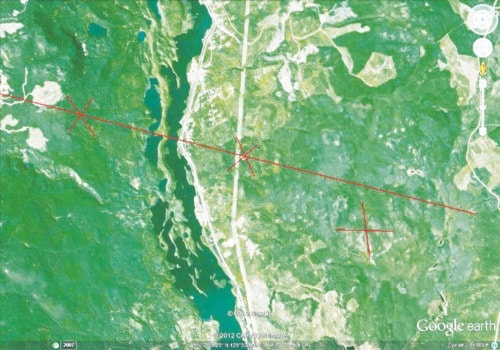A 亚洲天堂 Lake man thinks he has possibly found three meteorite craters and is pushing for a geologist to come to 亚洲天堂 Lake to solve the mystery.
Joseph Driscol said to Lakes District 亚洲天堂 that he has been trying to get the word out to any level of government for well over a year, expecting that if the meteorite craters are confirmed, 亚洲天堂 Lake could become a tourist mecca for meteorite and rock hounds.
While Driscol thinks what he has found could be meteorite craters, he said the help of a geologist is needed to prove it.
Most come from asteroids. A small number of meteorites have been shown to be originating from Mars or the moon. In One of the Martian meteorites, known as , found in Antarctica by an American scientist, is believed to show evidence of early life on Mars.
The largest ever found, the, is thought to have plunged into the Earth's atmosphere a little less than 80,000 years ago. Weighing in at about 66 tons the Hoba meteorite is composed of about 84 per cent iron and 16 per cent nickel, with traces of cobalt.
The , near Winslow, Arizona was formed about 50,000 years ago by an iron meteor which was about 30 to 50 meters in diameter. The crater is substantial, at 1,200 meters in diameter and 200 meters deep.
Both sites have become popular tourist destinations.
So far approximately 120 impact craters have been confirmed worldwide.
Driscol said the first crater he found is on the South slope of a fairly steep hill and measures approximately 1,000 metres in diameter.
"I was searching for a snowmobile trail near our house in Tintagel using Google Earth. As I was scrolling down the BC Hydro power line, I thought I saw a 'wheel' on the line. It was only about five kilometres away at the end of Moose Road so I rode over and had a look. It was nice that it was so close. I reported it to the Geological Survey of Canada and they said it would be at least two years before they could even look at it, so I looked at it myself."
From the air, photos of the crater show a large circular depression in the ground.
Driscol said that during a visit to the Tintagel site, a rock he collected was unique.
"During a whole summer of hunting, this rock was unique among thousands I looked at. Aside from the rock, other indicators also show that a meteorite has landed here, but they don't prove it so a good geologist would be worth gold come May or June. So would a couple hundred people swinging metal detectors," Driscol said.
Raminder Singh Samara an astronomer at the in Vancouver examined a number of photos of the crater, but said he could not conclusively say the depression in the ground is a crater caused by a meteorite.
"There appears to be a clear depression in the ground, however the depth is difficult to estimate," Singh Samara said.
"Knowing the depth, diameter and the type of rock in the ground, it is possible to estimate the size of any meteroid that caused the depression. The rocks that should be found here should be very heavy compared to normal rocks. If there are meteorites in the area they should be very iron rich."
Singh Samara said, "An impact crater about 50 meters across would have dug into the ground and made the soil far less fertile, so you wouldn't expect anything large like trees to grow in it. It could have been that the meteoroid came at a very shallow angle from the East-North-East. However looking at the ejecta [the powder that is ejected from underground by the violent collision] we should see a distribution that is towards the west-south-west, but [in the images] it's towards the South-West in my opinion. I think it is still inconclusive from the few images I've seen to conclude that this is or is not an impact crater."
He said, " I can't say for certain if this is or is not an impact crater. The smoking gun would be finding small pebbles and stones that are very glass-like [tektites] on site due to the meteorite vaporizing some of the rock and melting other bits of it."
Driscol said the summer time satellite imagery of the crater does have greenery inside the crater, but he explained, "The reason you can see this, is because the layer of soil that has built up since it got 'cooked' only supports spruce trees because they can grow in shallow soil. Pine trees can't. It's really quite fascinating why it's two colours. I do believe it came in at the angle the astronomer [Singh Samara] described, East of North."
Singh Samara said the H.R. MacMillan space centre doesn't track impact craters or keep records, but he added that impact craters are usually confirmed, or debunked, by on site visits from a geologist.
Driscol said to Lakes District 亚洲天堂 that he has explored all avenues to get someone out to the area to assess the crater.
The other two craters are located on the Southside and are estimated to be similar in size and shape to the Tintagel crater.
"I just want to know if what I have found is a meteorite crater, if it is, this is a certainly a unique tourism opportunity for 亚洲天堂 Lake," he said.



